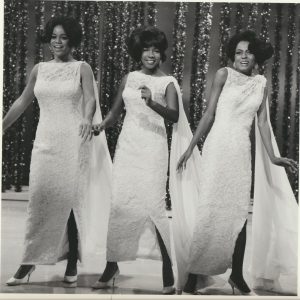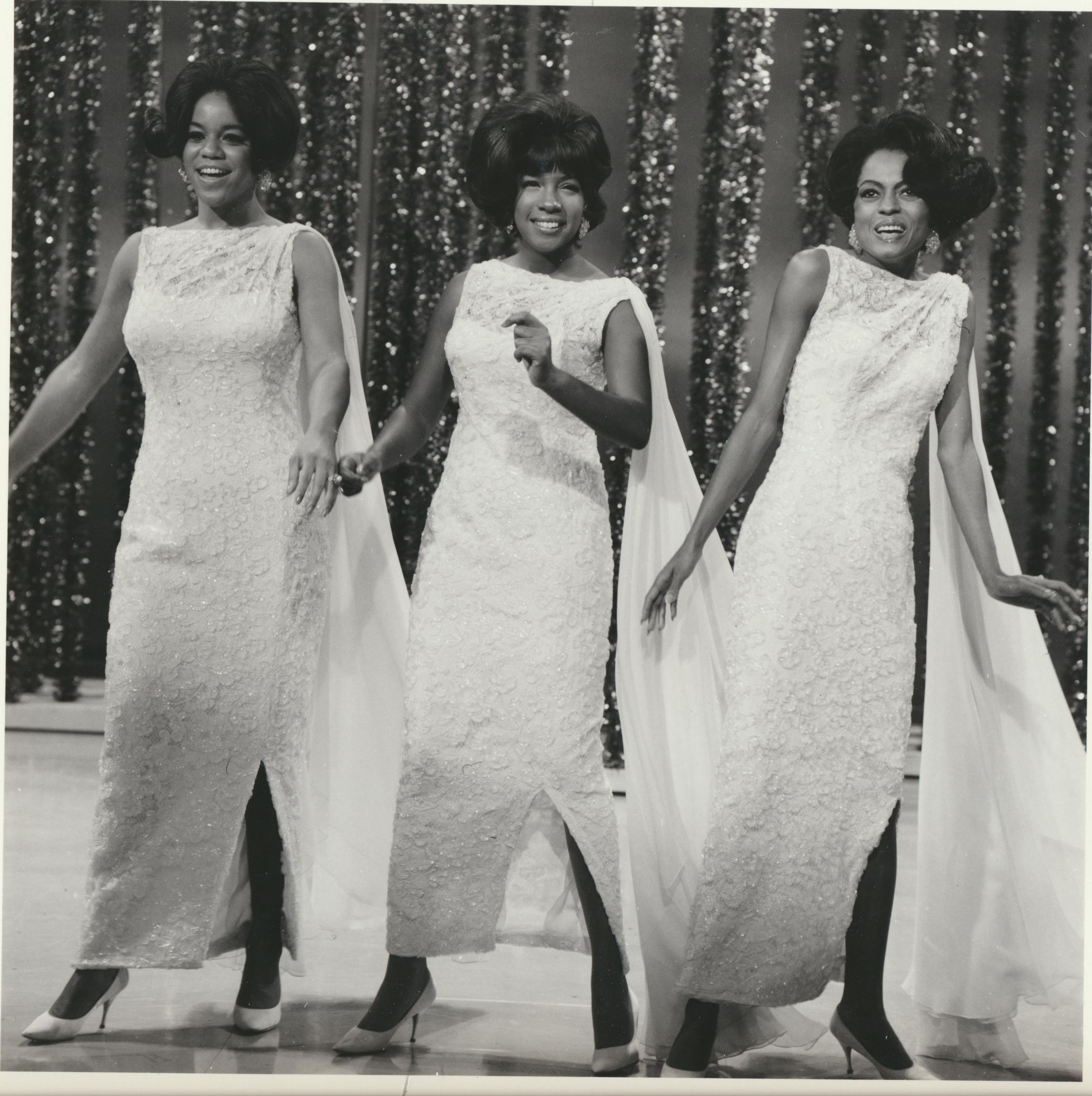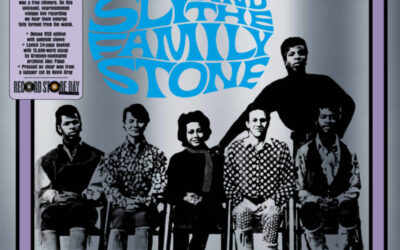By Harvey Kubernik c 2016
2014 marked the 50th anniversary of the release of the Supremes’ first number-one hit single, “Where Did Our Love Go,” the first of five such

Courtesy of SOFA Entertainment All rights Reserved
The Supremes:
Florence Ballard, Mary Wilson, Diana Ross
“The Ed Sullivan Show”
consecutive hit singles.
In 2016, and always carrying the legacy for the Supremes, after the departure of founding members Florence Ballard and Diane (Diana) Ross, is original member, Mary Wilson.
Two recent singles from Wilson are currently available on iTunes, Amazon, and wherever else digital music is found: “Life’s Been Good to Me,” and the Mother’s Day song, “Darling Mother.”
2015 was an exciting time for Mary. Her song “Time to Move On” climbed to #23 on the Billboard dance charts, which marked her first time on the charts with a solo recording, since the Supremes.
Wilson is very active in charity endeavors and humanitarian work. Her Dare to Dream lecture, which she gives to young people, emphasizes the need for personal perseverance to achieve their goals, despite obstacles and adversities in their lives. The topic is the foundation of her best-selling autobiography Dreamgirl – My Life as a Supreme.
Mary later authored its sequel, Supreme Faith – Someday We’ll Be Together. In 2000, these two books, along with updated chapters, were combined to complete her third book. She is currently working on a fourth book, which will be a coffee table hardcover featuring the gowns, history and legacy of the Supremes.
In 1988, Mary Wilson accepted the prestigious Lifetime Achievement Award on behalf of the Supremes when they were inducted into the Rock and Roll Hall of Fame. In 1994, the Supremes received a star on the Hollywood Walk of Fame, and in 1998, they were inducted into the Vocal Group Hall of Fame.
In 2001, Ms. Wilson was the recipient of an Associate’s Degree from New York University and an honorary Doctorate of Humane Letters from Paine College in Augusta, Georgia.
Mary Wilson has been instrumental in garnering support for the Truth in Music legislation, which protects the identities and rights of artists and prohibits imposter groups from using the names and likenesses of famous acts, such as the Supremes. She and other Fifties and Sixties artists inspired Republican Sen. Robert Schuler of Cincinnati to introduce the ‘Truth in Music’ bill after they told him how bogus musical groups were using their names. With the aid of the Vocal Group Hall of Fame and Ohio elected officials, State Sen. Bob Robbins and U.S. Rep. Dennis Kucinich, Ms. Wilson played a key role in helping the grassroots movement descend on Capitol Hill. The bill approved an amendment to the Truth in Advertising Act (1968) that requires groups to have either an original member or a license to use their name.
This past winter 2015, Wilson participated in the Legends Live Tour, which teamed her with international soul acts Dionne Warwick, Roberta Flack, and the Drifters on U.K. arena stages.
Mary Wilson’s experience as a Supreme and cultural ambassador is currently reflected in an exhibition at the Grammy Museum that opened on June 25, 2015 and just closed April 1, 2016. The exhibit displayed gowns and rare artifacts from the private collection of founding member Wilson.
Mary Wilson and Harvey Kubernik Interview
HK: The stage show, Motown the Musical, has been very successful.
MW: I loved the Motown the Musical. It was a wonderful thrill to have that on Broadway. Are you kidding? It was great.
HK: Why does the music of Motown continue?
MW: Motown was a phenomena. Especially at the time when it first started in the sixties. It was the template for the sixties and all the music you’ve heard since then. It was like a great model for music. People say it’s the soundtrack of their lives. Because it’s the music we heard. The music we heard when we graduated from high school. Our first boyfriends. All that. It was just a great time for our childhood.
“At Motown Berry Gordy came up with the formula that really was his dream but the same dream that we all had individually and collectively. That’s what made it so great. The talent was out there and we all had a place to go to in Detroit. Talent was everywhere. But not every state or city had a Motown Records. Where they could migrate to. Musicians, writers. All kind of people who hear about Marv Johnson or the Miracles. ‘That’s where we want to be!’
“We all had the same hearts. And, of course, if it had not been for Berry Gordy having a place for all of our hearts to go with all that God given talent, you know, maybe it would have not been as great. That to me is what has made it last so long and reach so many generations and decades. Myself and the Supremes are celebrating our 55th year in show business.
HK: History has shown how influential The Ed Sullivan Show was for musical acts to be presented from the fifties to the very early seventies on a weekly basis. The Supremes and Motown artists really benefitted from the exposure.
MW: For us, being on his show was so much more than record sales. It wasn’t about promoting us. It was about that we had grown up watching The Ed Sullivan Show. We had grown up watching shows where you didn’t see a lot of black people starring on those shows. For us, we were like every other family in America who spent hours watching The Ed Sullivan Show. So for us, being on the show, was such a great honor. Because we were there to see the world changing. To see America changing. We were excited! We’re on The Ed Sullivan Show.
“I remember there was a lady, we were doing the show, maybe in Miami. This lady after the show came back stage and she said, ‘I just want you girls to know that I allow my family to watch you girls when you come on Ed Sullivan.’
“Well, my brother, who wasn’t a black panther, a black young guy, he said, ‘Mary. How dare her to say she allows her family to watch you.’ ‘You don’t understand, Roosevelt. You know, that’s true, We came from a time when a whole family of all different colors didn’t sit around watching black people on television.’
“Before the Dick Clark tours there were segregated hotels. We were part of that change. We were part of helping America to see black people, black women, being proud, beautiful and successful. It wasn’t just us. Many people before us. But they didn’t have the television to expose them that wide range of people as we did at the time when we came. We were lucky. And we stood on a lot of shoulders. But we were there when the doors opened.
“The other thing was that we were seen in color after our initial appearances were in black and white. Recently, my granddaughter was watching a [SOFA Entertainment] Ed Sullivan DVD collection of the Supremes. And she said to me. ‘Grandma! What happened to the color?’ ‘Cause she has never seen a black and white TV. (laughs).
HK: You have always loved to tour. With the Supremes and under your own name.
MW: I love to tour. I went to the Whisky a Go Go in the sixties. I always went out to see everybody. I loved seeing other acts. I just toured with Bill Wyman in England. And he and I always talk about The TAMI Show. We all thought James Brown was gonna close the show. And all of a sudden we heard this rumor back stage that the Rolling Stones were closing. Bill said they were all scared. And they became great friends. Which was really cool.
HK: In 1966, and ’67 you had number one albums Supremes A Go Go and Greatest Hits and a huge hit in 1967 with “Reflections” with your producers Holland-Dozier-Holland.
MW: Our songs from 1964, ’65 and ’66 were heard in1967. Berry Gordy and the A&R department knew what was happening. And we didn’t have to think about that. But we were happy for it. And as a group, ‘Reflections’ took us into areas we wanted to go. Which is great.
HK: My favorite Supremes’ record is “Up The Ladder to The Roof.” Recorded after Diana Ross departed in January 1970. You, Cindy Birdsong and Jean Terrell billed as the “New” Supremes, better known today as the “70’s Supremes.”
It’s when the Supremes also charted with “Stoned Love” and “Nathan Jones.” All three hits were produced by genius producer/songwriter Frank Wilson. Can you try to even compare Wilson with the Holland-Dozier-Holland production and songwriting team?
MW: I’ve never ever been the kind of person that compares. I never have. Because I’m just so fortunate to have known so many brilliant people. However, just to talk about H-D-H was such a wonderful experience for our growth and journey. They took us through the times that was going on in the world. Each time they would bring us to another level. The records show this. We did ‘You Can’t Hurry Love’ and ‘You Keep Me Hanging On.’ Those were great albums. That’s why we had wanted them in the beginning. We had to grow into that. After we no longer had H-D-H there was a period where we didn’t have anyone. That to me was the worst period musically.
“So we got with Frank Wilson who was just brilliant. What was great about him is that now it was more West Coast. It wasn’t Detroit. We did everything pretty much on the West Coast, even though we still recorded in Detroit.
“Frank brought a different feel. There’s a wah-wah pedal on ‘Up The Ladder To The Roof.’ A more seventies soulful kind of feel. And after we no longer had Diane. Berry Gordy was very helpful in bringing Jean Terrell. Who I just adored. And she was the best replacement for Diane, not that anyone could ever replace Diane. For me, the only group was the three of us. Me, Flo and Diane. The seventies was a seventies group. And Frank was able to capture who we were at that point with Jean Terrell. He was just a brilliant producer.
“Frank did one of the greatest records, ‘Still Waters Run Deep’ with the Four Tops. We had a whole other concept when we moved out to the West Coast. We did our sessions in Los Angeles. Hollywood. The Motown studio.
HK: Why are the songs of Motown so durable?
MW: I think all of the things we are recognizing now, the Motown label, the Funk Brothers, the musicians, Berry Gordy, here we are 40, 45, 50 years later and people are still re-recording those songs. Berry Gordy was an innovator, and he knew talent when he saw it. He only accepted the best. He allowed people to create on their own. He allowed the producers to really inspire each other.
“There’s no real answer to your question other than I know when I was recording those songs, it was the people, it was the music…Who knows. Any bass player out there listened to Motown records to learn how James Jamerson played. Any new female group coming up will definitely try and take something from the Supremes. It was like we were the model for music. The Motown sound was the model. And the music is universal.
“Then, we didn’t think in those times the songs would be in TV or film. Later, seeing that these songs were such great hits, and the years showed that they were really fantastic. Other people recording them, you began to realize that what you know all along everybody else knew as well. We knew it at the beginning that they were great recording them. But when everyone else got it, what we knew it was true. That’s the great part about it. Like on China Beach they use ‘Reflections.’ Commercials…
HK: What is it like for you hearing a Motown record on the radio, TV or soundtrack to a movie?
MW: When a Motown song is played on the radio, or a tune on TV, in a film…I always get that…When I hear them…For us, we were a family, so for us, the loss is greater than it is for you guys, for the fans…Because it’s like losing our brothers and sisters. There’s a huge sadness. Their contribution continues…I saw Eddie Kendricks’ face flash across the screen recently when I was watching TV, which I don’t do too often, and I almost cried. I felt the tears well up in my eyes. It’s always there. Every one of us at Motown feels the same way. A portion of this article was published in Record Collector News Magazine
Harvey Kubernik has been a music journalist for over 44 years and is the author of 8 books.
During 2014, Harvey’s Kubernik’s Turn Up the Radio! Rock, Pop, and Roll in Los Angeles 1956–1972 was published by Santa Monica Press. In September 2014, Palazzo Editions packaged Leonard Cohen: Everybody Knows, a coffee—table—size volume written by Kubernik, currently published in six foreign languages. BackBeat/Hal Leonard Books in the United States.
Harvey and Kenneth Kubernik wrote the text for photographer Guy Webster’s first book for Insight Editions published in November 2014. Big Shots: Rock Legends & Hollywood Icons: Through the Lens of Guy Webster. Introduction by Brian Wilson.
In November of 2015, Back/Beat/Hal Leonard published Harvey’s book on Neil Young, Heart of Gold.






